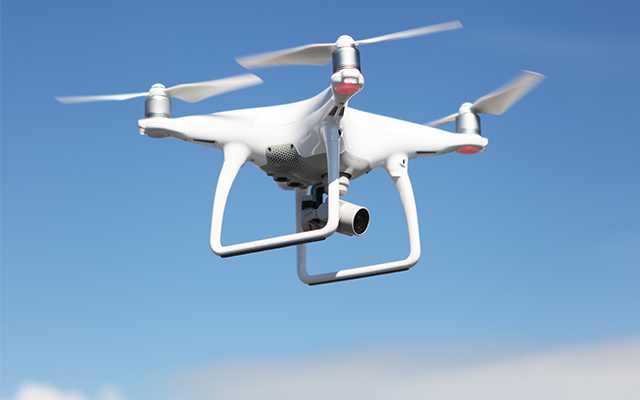Every time you unlock your phone with your face, ask your digital assistant a question, or get a song recommendation that feels eerily perfect, you’re witnessing machine learning at work. It’s the quiet genius behind much of modern life—an invisible intelligence woven into our daily routines.
Machine learning, a branch of artificial intelligence, allows computers to learn from data, identify patterns, and make decisions without explicit programming. It’s how Netflix knows what you might want to watch next, how email filters catch spam, and how cars can navigate without human drivers.
What makes machine learning so fascinating is not just its technical brilliance, but its emotional resonance. It adapts to us. It learns from our choices, behaviors, and voices. It molds technology to fit human life more intuitively than ever before.
Let’s explore fifteen remarkable examples of how machine learning is already transforming everyday life—often in ways we barely notice, yet constantly benefit from.
1. Personalized Recommendations: The Algorithms That Know You
When Netflix suggests your next favorite show, or Spotify builds a playlist that fits your exact mood, it’s not magic—it’s machine learning.
Recommendation systems use algorithms that analyze your behavior: what you watch, listen to, or buy; how long you engage; and what you skip. They compare this data to millions of other users and predict what you might enjoy next.
Netflix’s algorithm, for instance, studies everything—from your viewing time to the actors you favor. Spotify tracks your listening patterns, discovering hidden similarities between your playlists and others’. Amazon does the same with purchases, ensuring that every “You might also like” feels personal.
The beauty of this technology lies in how seamlessly it blends with our lives. It learns our tastes, habits, and even our moods, quietly turning everyday browsing into a tailored experience that feels almost human.
2. Virtual Assistants: Conversations with Artificial Minds
“Hey Siri.” “Okay Google.” “Alexa.” These phrases have become a part of our daily vocabulary, calling upon digital companions powered by machine learning.
Virtual assistants use natural language processing (NLP) and deep learning to understand speech, interpret meaning, and generate relevant responses. They analyze not only the words but the context—tone, timing, even past interactions.
Every question you ask—about the weather, a reminder, or a recipe—adds to the system’s knowledge base. Over time, these assistants learn your preferences: your favorite coffee shop, your morning routine, your music taste.
The emotional appeal lies in their responsiveness. They give technology a voice, a presence that listens and reacts. Behind that calm tone and quick answer lies a symphony of algorithms translating the infinite variability of human speech into machine understanding.
3. Email Filtering: The Unseen Guardian of Your Inbox
Every day, billions of spam messages are sent worldwide, and yet, most never reach your inbox. That’s thanks to machine learning quietly working in the background.
Email providers like Gmail and Outlook use ML-based spam filters that learn to recognize patterns in unwanted messages. Instead of relying on fixed rules, these systems continuously adapt—studying sender reputation, message structure, keywords, and even how users mark messages as spam or safe.
Modern filters go further, categorizing emails into “Primary,” “Promotions,” or “Social,” each tailored to your behavior. When you move a message or click “Not Spam,” the algorithm learns from you, becoming more accurate over time.
It’s easy to take this for granted, but machine learning has turned email from a cluttered mess into a clean, organized communication tool—protecting both time and sanity.
4. Facial Recognition: Unlocking the Power of Vision
You glance at your phone—and it unlocks instantly. A friend tags you in a photo automatically. These are the wonders of facial recognition, one of machine learning’s most impressive feats.
Facial recognition systems analyze facial features—distance between eyes, shape of the nose, contour of the jaw—and transform them into numerical data points. Using deep learning, the algorithm learns to recognize these patterns with incredible accuracy.
Apple’s Face ID, for instance, adapts to gradual changes in your appearance—hairstyles, glasses, aging. Security systems and airports use similar models to verify identity in real time.
Beyond convenience, facial recognition is reshaping security, personalized access, and even healthcare diagnostics. Yet it also sparks vital discussions about privacy and ethics—reminding us that technology’s power must always be guided by human responsibility.
5. Social Media Feeds: The Algorithmic Mirror of Your Mind
Have you ever noticed how your social media feed seems to know exactly what you want to see? That’s not coincidence—it’s machine learning curating your digital world.
Platforms like Facebook, Instagram, TikTok, and X (formerly Twitter) use ML algorithms to analyze what you like, share, comment on, and linger over. They learn what captures your attention and fill your feed with more of it.
The system studies millions of signals: which posts you skip, which videos you replay, and who you interact with most. Over time, it builds a digital portrait of your interests, adjusting in real time as your tastes evolve.
This creates a personalized, almost hypnotic flow of content—a mirror reflecting your preferences, beliefs, and emotions. While it enhances engagement, it also raises questions about echo chambers and digital wellbeing.
Still, when balanced ethically, machine learning on social media transforms vast chaos into curated connection.
6. Self-Driving Cars: Teaching Machines to Navigate the World
The dream of cars that drive themselves is no longer confined to science fiction. Self-driving vehicles rely heavily on machine learning to perceive, interpret, and react to their surroundings.
Through sensors, cameras, and LiDAR systems, autonomous cars gather massive streams of data every second. ML algorithms process this information to identify pedestrians, lane markings, traffic lights, and obstacles.
Deep neural networks allow the car to learn from experience—each journey, success, and near-miss improving its future decisions. Tesla’s Autopilot, Waymo’s vehicles, and other prototypes all rely on reinforcement learning, a system where the algorithm “rewards” itself for making correct choices.
What makes this so extraordinary is the blending of physics, mathematics, and intuition. The car doesn’t just see—it predicts, anticipates, and adapts, all in real time.
Self-driving technology is still evolving, but it promises a future where accidents, traffic jams, and human fatigue become relics of the past.
7. Healthcare Diagnostics: The Machine That Saves Lives
In hospitals and labs around the world, machine learning is quietly saving lives. From detecting tumors to predicting heart disease, it’s revolutionizing the way doctors diagnose and treat patients.
ML algorithms analyze medical images—X-rays, MRIs, CT scans—with precision that often surpasses human experts. Google’s DeepMind created a system capable of diagnosing eye diseases as accurately as ophthalmologists.
Machine learning also powers predictive models that assess risks for conditions like diabetes, cancer, and Alzheimer’s by identifying subtle patterns in data long before symptoms appear.
In personalized medicine, ML tailors treatment plans based on genetic and lifestyle factors, offering therapies uniquely suited to each individual.
The emotional depth of this innovation is profound—it’s technology guided by compassion, giving doctors sharper tools and patients a better chance at life.
8. Fraud Detection: The Digital Shield Protecting Your Finances
Each time your bank alerts you to a suspicious transaction, machine learning is the silent guardian watching over your finances.
Financial institutions use ML algorithms to monitor billions of transactions in real time, detecting anomalies that might indicate fraud. These systems learn what “normal” behavior looks like for each account—your spending patterns, locations, times, and amounts.
When something deviates—a purchase in a foreign city or an unusual withdrawal—the algorithm flags it instantly. Over time, it becomes smarter, reducing false alarms while catching real threats faster.
Machine learning doesn’t just react; it predicts. By studying evolving fraud techniques, it anticipates new risks before they happen.
In a digital economy where cybercrime grows more sophisticated, ML stands as one of the most powerful shields we have.
9. Smart Homes: When Your House Learns from You
Your thermostat adjusts before you ask. Lights dim automatically at night. The coffee starts brewing as you wake. Behind these small miracles lies machine learning’s ability to understand and adapt to human routines.
Smart home devices—like Google Nest, Amazon Echo, and smart lighting systems—use ML to learn from daily patterns. They track when you leave, when you return, what temperatures you prefer, and which music lifts your mood.
Over time, the home becomes a living organism—predictive, responsive, and deeply personal. It conserves energy, enhances comfort, and adds convenience without constant human input.
It’s more than automation; it’s adaptation. A home that feels alive, attentive, and in tune with the rhythm of your life.
10. Language Translation: Bridging the Human Divide
Once, translating languages was slow, clunky, and often hilariously inaccurate. Today, tools like Google Translate and DeepL produce fluid, natural translations—thanks to machine learning.
Neural machine translation models study billions of multilingual sentences to understand not just words, but meaning. They learn how ideas flow across languages, adjusting grammar, idioms, and tone.
Over time, these systems evolve, absorbing new phrases and slang, making cross-cultural communication smoother than ever. You can now speak in one language and be understood in another almost instantly—through your phone, laptop, or earbuds.
This is one of machine learning’s most human triumphs: breaking down barriers that have divided people for centuries and giving humanity a shared voice.
11. Voice Recognition: Teaching Machines to Hear
From dictating messages to transcribing lectures, machine learning has given computers the ability to hear and understand human speech.
Voice recognition systems analyze sound waves, filter out noise, and convert speech into text. Deep learning models then interpret context and intent, improving with every interaction.
Services like Google Speech-to-Text, Apple’s Siri, and Zoom’s live transcription have reached near-human accuracy, even across accents and noisy environments.
The emotional impact of this technology is immense. It empowers accessibility—helping those with disabilities communicate effortlessly—and brings human warmth into digital interaction. Machines are no longer deaf to our voices; they’re learning to listen.
12. Online Shopping: The Intelligent Marketplace
When you browse an online store and find products that seem handpicked for you, it’s machine learning shaping your shopping journey.
E-commerce platforms use ML to personalize product recommendations, predict trends, and optimize search results. Algorithms analyze your browsing history, time spent on products, and purchase patterns to anticipate what you might want next.
Amazon, for example, uses predictive analytics not only to recommend products but also to decide warehouse inventory, ensuring items arrive faster.
These algorithms even adjust prices dynamically, balancing supply, demand, and competition.
Online shopping, once a static experience, has become interactive—learning, adapting, and evolving with every click.
13. Navigation and Traffic Predictions: Smarter Paths, Smoother Journeys
Every time you open Google Maps or Waze and find the fastest route, you’re witnessing machine learning transform data into direction.
Navigation systems gather real-time information from GPS, traffic sensors, and millions of smartphone users. ML algorithms analyze this data to predict traffic flow, estimate travel time, and reroute drivers around congestion.
They even learn seasonal and hourly patterns—anticipating traffic jams before they occur. Ride-sharing companies like Uber also use ML for route optimization, demand prediction, and driver-passenger matching.
The result is more than convenience; it’s efficiency—less time wasted, fewer emissions, and smoother travel for everyone.
14. Banking and Credit Scoring: Smarter Decisions, Fairer Outcomes
Traditional credit scoring often relied on narrow metrics, leaving many people underserved. Machine learning is changing that, bringing nuance and fairness to financial assessment.
ML algorithms analyze a broader range of data—spending behavior, payment patterns, digital footprints—to assess creditworthiness more accurately. This helps lenders identify responsible borrowers who might otherwise be overlooked.
Banks also use ML to automate customer service, manage risk, and detect anomalies in financial behavior.
Machine learning doesn’t just make banking smarter—it makes it more human, replacing rigid formulas with adaptive understanding.
15. Content Creation and Art: When Machines Learn to Imagine
From AI-generated music and paintings to text written by intelligent models, machine learning is now stepping into the world of creativity.
Tools like DALL·E, ChatGPT, and Jukebox learn from massive datasets of art, literature, and sound to generate new creations. Musicians use ML to compose melodies; writers use it to brainstorm; designers use it to visualize ideas.
These systems don’t replace human creativity—they amplify it. By learning from the patterns of art itself, they help us explore new forms of expression that once seemed impossible.
It’s where emotion meets computation—where the soul of creativity finds a partner in artificial intelligence.
The Heart of Machine Learning
At its core, machine learning is not just about algorithms—it’s about adaptation. It’s the science of learning from experience, a mirror of the human brain’s curiosity and flexibility.
Every time a machine improves—whether predicting your next song or diagnosing a disease—it echoes humanity’s oldest instinct: to learn, to adapt, to grow.
Machine learning is not replacing us; it’s extending us. It transforms ordinary moments into intelligent experiences, making technology more intuitive, responsive, and alive.
In every tap, word, and glance, we are teaching machines about ourselves—and in return, they are teaching us to see the world through a new kind of intelligence: one that listens, learns, and evolves with us.






